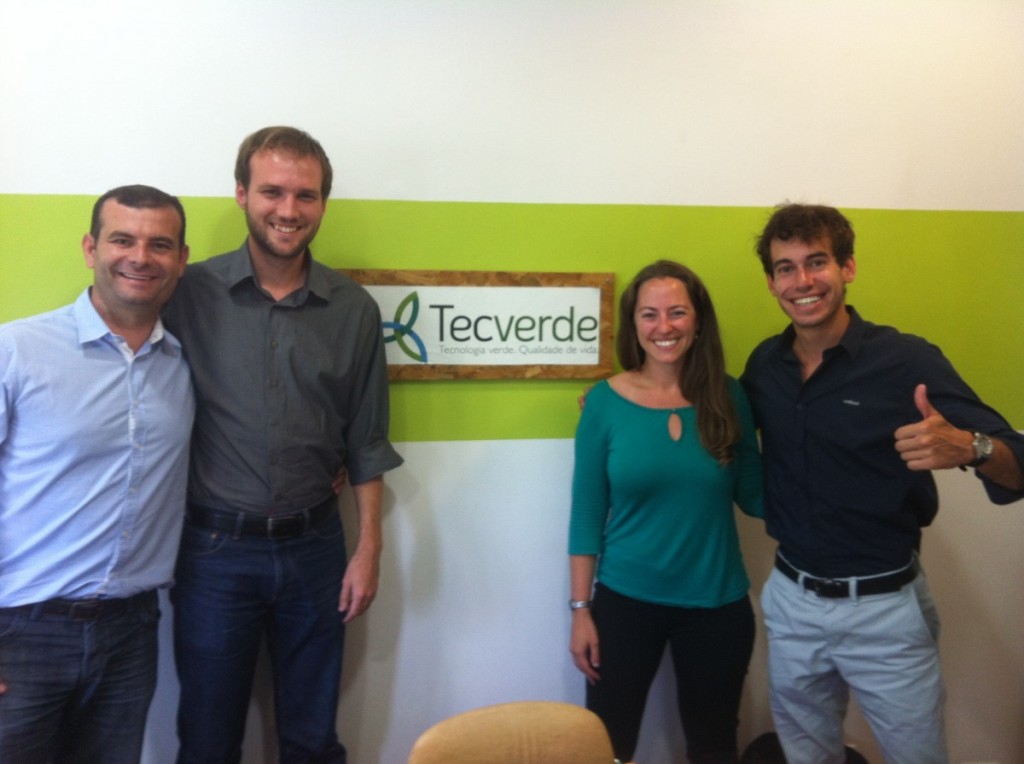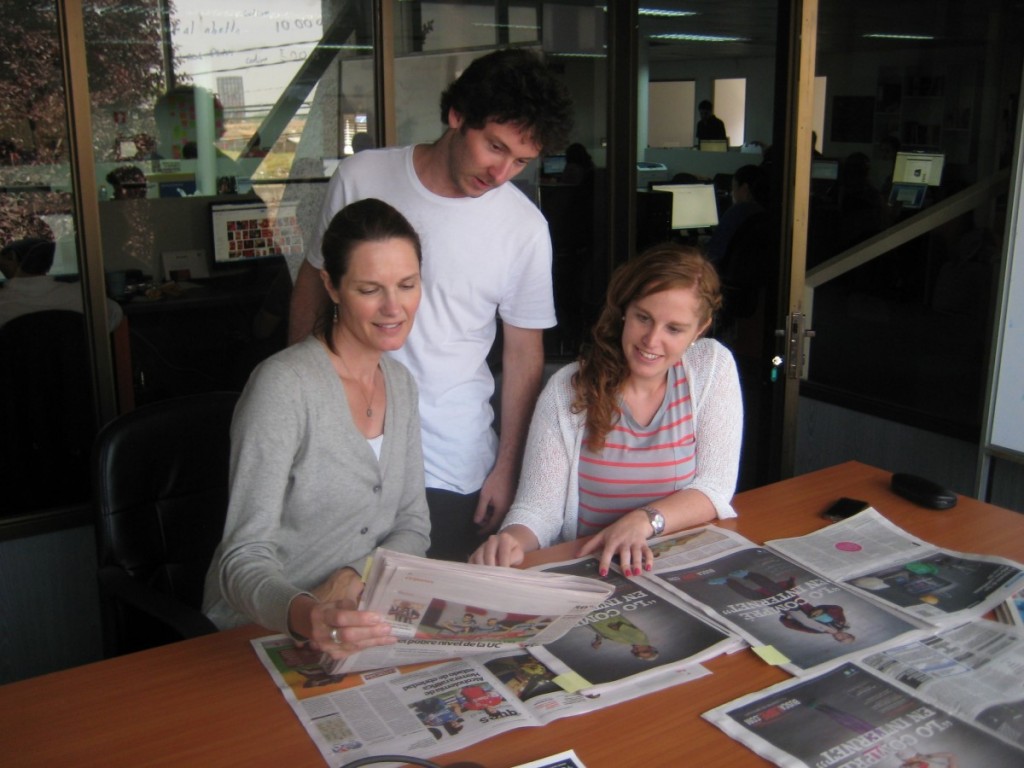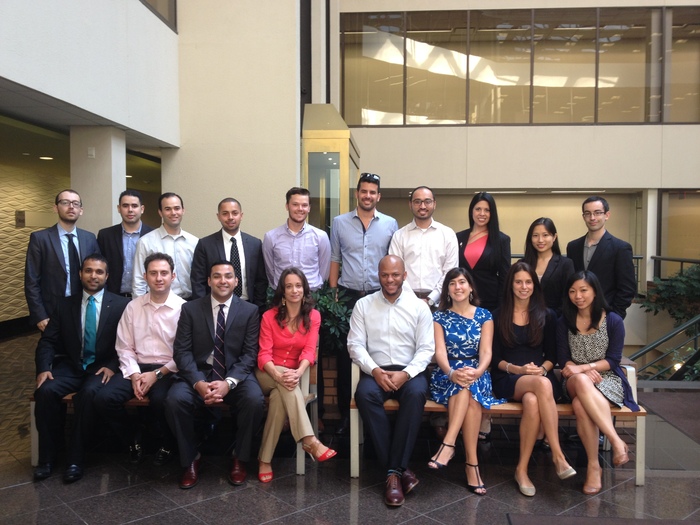This is one of a series of articles inspired by the Commit!Forum panel, The Philanthropic Evolution: Shift From Management to Partnership, which took place October 9, 2014 in New York City.
After almost 20 years as a successful leader in marketing and communications, Linda Whalen, the Brand and External Communications Leader for EY’s West region, decided to do something different. She took on a two-month assignment in Chile helping to refine the marketing strategy and plan for Buscalibre.com, an e-commerce portal. For Linda, the experience was eye opening.
“It helped me to expand my international business and cultural awareness.” And, the Chilean enterprise obtained the benefit of world-class consulting services at no cost.
Onuwa Uzor, a senior manager in EY’s Transaction Advisory Services practice in Atlanta, spent seven weeks in Brazil supporting Pixel Labs, a developer of interactive cosmetic technology solutions for point of sale and online channels. He helped Pixel’s management team better understand their needs while developing sustainable solutions for growth and success.
“Although I had never worked in a start-up environment or in Brazil before, I was able to outline best practices for production planning and market research, and develop a framework for considering new clients.” While these business approaches are typical for most well-established companies, such practices can be the difference between whether a new business will successfully scale, or fail.
EY’s Vantage Program works with non-profit Endeavor to pair EY employees with high-impact entrepreneurs in emerging markets. Linda and Onuwa’s assignments are just two examples of the many ways EY and Endeavor have collaborated through the EY Vantage Program over the past 10 years. The union, established in 2005, provides a strong example of how two such organizations—one for-profit and the other non-profit—can work together to achieve common goals.
Specifically, the Vantage Program yields significant two-way benefits. First, access to EY staff enables Endeavor to be more successful in helping local entrepreneurs build their businesses. This in turn benefits EY, most visibly by stimulating a local, developing economy and driving future demand for additional services. In essence, a rising tide floats all boats.
But EY and its employees also benefit by gaining experience in emerging markets. In fact, such volunteers almost invariably describe the experience as one of, if not the most significant and meaningful in their entire careers. As Onuwa explains:
“Professionally, I enhanced my cultural awareness, improved my management skills, and was pushed outside of my comfort zone. I also managed to learn enough Portuguese to get by and developed some lifelong friendships and built my network outside of the US. The experience overall has been priceless to my career development and was easily some of the best seven weeks of my professional and personal life. I encourage other companies to explore creating an International Corporate Volunteer program to help their employees develop leadership skills, relationships in emerging markets, and a global mindset.”
The collaboration has been so successful that the Vantage program, which started in the Americas, has led to a broader global relationship between Endeavor and EY, paving the way for more cooperation across the globe.
Collaborations between the private and social sectors can often accomplish remarkable things, and they are even more effective when a company encourages its employees to engage directly with a social sector organization. Yet, finding an organization with which sustained collaboration is both feasible and productive can be more difficult than it might seem. Getting things right requires a foundation of mutual understanding, shared values and objectives, and a commitment to sustained engagement. For the corporations, this means taking the lead to make sure the partnership is mutually beneficial in the long term.
In practice, EY’s collaboration with Endeavor demonstrates that effective volunteer programs depend on sustainable partnerships with social-sector organizations that are able to operate anywhere in the world, and effectively extend the company’s commitment to sustainable social impact. Like any marriage of time, values, and resources, the EY/Endeavor alliance is founded on five key tenets. These include ensuring both parties have common values, a shared core focus for the collaboration, a clearly defined mission and corresponding objectives, a clear understanding about respective capabilities (and responsibilities), and of course, an ongoing willingness to review, refine, and improve the operations and outcomes of the partnership.
1. Ensure common values among partners
Each organization needs to closely examine the other to ensure alignment of values and objectives. Both organizations must be confident of a low likelihood of cultural- or mission-driven conflicts or surprises down the road that could severely compromise the relationship. Perhaps the not-for-profit could potentially become involved in initiatives that could harm the reputation of the corporation or otherwise reduce the willingness of its employees to associate or volunteer. Get to know the organization, worldwide, and if any organizational activity generates cause for concern then the relationship is probably not worth pursuing.
2. Align partners based on a core focus
Part of this “getting to know you” phase should also include significant efforts by the corporation to make certain the core focus of the partnership is clearly understood. The most hard-hitting and successful partnerships tend to be constituted to address a particular set of challenges for a clearly defined set of recipients. One thing to avoid is a case where a social sector organization, anxious to secure funding or associate with a highly visibility corporation, becomes willing to significantly alter its raison d’être. Such alliances may seem initially appealing, but over time tend to garner less attention from the host organization, and thus underperform or fail.

The 2013 Vantage Advisor Elise Saur at TecVerde, a developer of high-end, eco-friendly homes located in Brazil.
3. Formalize the mission and its measurement
The sponsoring corporation and the social sector organization should establish a clear vision of what they want to accomplish together. How, specifically, do the organizations intend to collaborate? What are the specific mission objectives, and how will progress against objectives be measured? What resources will be provided by each, when, and where? To be successful, partners must work toward clearly defined milestones and metrics.
4. Clearly define respective capabilities
Any organizational relationship built on employee involvement demands a realistic understanding of what the company’s people can provide within the partnership. Successful pairings begin with the company taking the time to help the organization understand the skills and knowledge likely participants possess and what sorts of tasks they can accomplish. This should also include realistic scene-setting and understanding around the structure of the workdays, work weeks, and work years.
It is vital that the two organizations are honest and open about what each is truly “good” at providing. Talking openly about skills and resources, together, the two groups can coordinate to better design the overall program, develop realistic job descriptions, and more optimally manage workflow.
Cultural and resourcing gaps can hamper the relationship. Workers from the corporation, for example, are likely accustomed to receiving rapid responses to calls, emails, or even tweets. Those from the host organization, however, may come from a less time-obsessed culture or otherwise operate under significant resource constraints–and may resent pressure for immediate or even same-day responses. Committed collaborators will be honest about such differences and, through communication, find effective workspace.
Read this article in the print version
5. Continuously review, refine and improve
Successful partnerships foster open communication and ongoing reflection, both formal and informal. Informally, leaders from both groups should speak openly, being honest about what’s working, what’s marginal, and what is so aggravating it could inhibit the mission. Formally, the collaboration should be working toward specific short-term and long-term metrics. In addition, many such teams also rely on tools, such as shareholder satisfaction surveys, to get a clearer assessment of the state of the collaboration. If the two organizations are not open and honest with one another, the relationship can suffer as a result.
Find the right long-term fit
EY’s collaboration with Endeavor, via the EY Vantage Program, has developed over the past ten years on the basis of the above traits, but these are by no means the only drivers of success. For example, opportunities to add to one another’s strengths outside of any core mission can also arise. A corporation, for example, might be well-positioned to provide invaluable services and insight to a social sector organization in the form of anything from web design and function to stronger HR strategies or management structure.
The bottom line is that if the two organizations are right for one another, the relationship has a strong chance of bearing fruit beyond expectations. But it is only through strong initial due diligence that the two will find the right fit. In the case of EY and Endeavor, a decade later, the union is still going strong. As Endeavor co-founder and CEO Linda Rottenberg explains, “We focus on revolutionizing entrepreneurship in emerging and growth markets.” Together with EY, “we are helping to unleash the tremendous social and economic value of high-impact entrepreneurs.” The collaboration, says Linda, “will be bearing fruit for generations to come.”
EY refers to the global organization, and may refer to one or more, of the member firms of Ernst & Young Global Limited, each of which is a separate legal entity. The views expressed are those of the author and do not necessarily represent the views of EY.
Deborah K Holmes
Deborah K. Holmes is the Americas Director of Corporate Responsibility for EY. She established and leads EY's, formerly Ernst & Young LLP, Corporate Responsibility (CR) function, focusing on skill-based volunteerism in the “3Es” (education, entrepreneurship, and environmental sustainability). Ms. Holmes holds both a BA and JD from Harvard University.






Pingback: Commit! Forum Encourages Authentic Partnership
Pingback: Must read: Inside The New Global Citizen Fall 2014 Issue